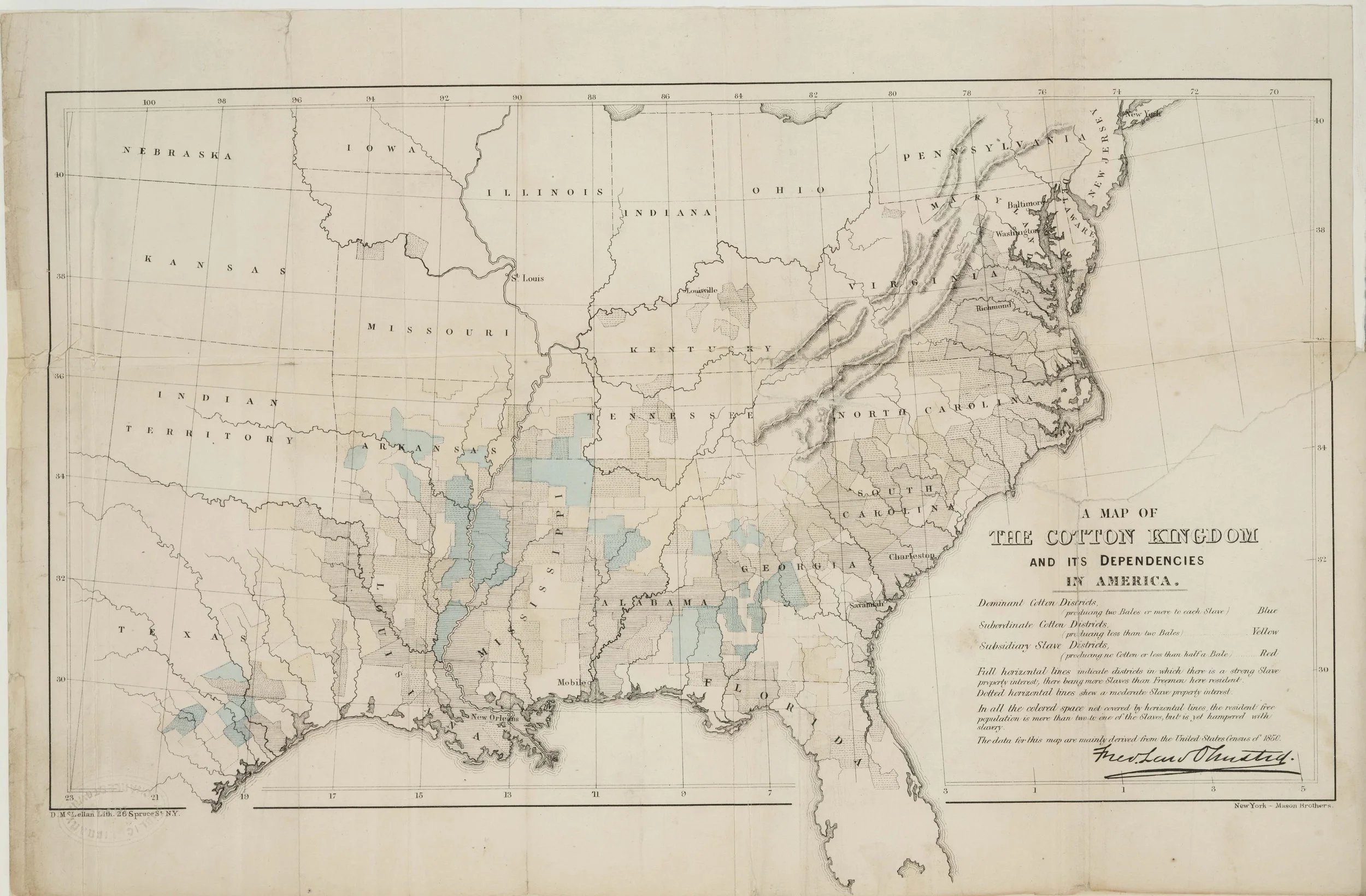Our purpose: Revealing the Enduring Impact of American Slavery on our Shared American Experience
By Marland Buckner, Shockoe Institute President and CEO
A Map of the Cotton Kingdom and its Dependencies in America, 1861. Digitized by the Denver Public Library Western History Department.
The story of America is the story of the struggle to expand human freedom. Understanding that story requires a deep appreciation of the extraordinary role of racial slavery in American history and its enduring impact on our nation. That is why the Shockoe Institute exists and what makes our mission unique.
When I describe the Institute’s mission, I am sometimes met with, “My family didn’t own slaves;” or “Slavery was horrible, yes, but look how far we’ve come as a country.” In a society that celebrates “freedom” above all other national values, it is hardly surprising we should seek to distance ourselves from what Thomas Jefferson referred to as “this execrable commerce.” After all, who among us would rush to celebrate association with the ownership of human beings? Far better we should celebrate our national progress as a wholly free people than dwell on what we would prefer to see as our distant slaveholding past.
But these responses, however deeply felt, fail to grasp two essential considerations in our history, two considerations the Shockoe Institute will help visitors see clearly: first, the sheer ubiquity of slavery in American life before emancipation; and second, not just that the legacy of racial slavery has had enduring impact, but why.
When the Institute opens its doors to our physical exhibition in Richmond, Virginia’s Main Street Station in late 2025, visitors will learn how racial slavery touched virtually every American. Visitors will learn of the conditions and decisions that created and perpetuated racial slavery even before America “became America.” By bringing those choices into full view, we hope to offer visitors the opportunity to better understand more than the origins of today’s “racial disparities” - gaps in wealth, educational attainment, life expectancy, etc. - because that is not enough. To understand slavery’s enduring impact, we must look beneath these well-documented disparities to the fact that American racial slavery was simply our nation’s unique version of humanity’s oldest problem: the belief that an individual or group of individuals is inherently superior to another.
The Shockoe Institute exists to show how humanity’s oldest problem “happened” in the United States, the role Richmond played in its rapid growth, how it changed but endures, and, hopefully, what we can do about it. That is what makes us different. That and the ways in which we will do our work.
We are building a museum-like permanent exhibition within Richmond’s Main Street Station, but we are not a museum. We will conduct public programs about issues of concern today, but we are not a think tank. We will conduct our work using all manner of creative tools, but we are not an arts organization. The Shockoe Institute is all those things, and more.
The Shockoe Institute is a place of learning, reflection, and action; relentlessly interdisciplinary, unapologetically evidence-based, and candidly so; always generous in welcoming our visitors, regardless of perspective, and dedicated to our mission of understanding how America’s slaveholding past informs our present, so that we may create a better future.

